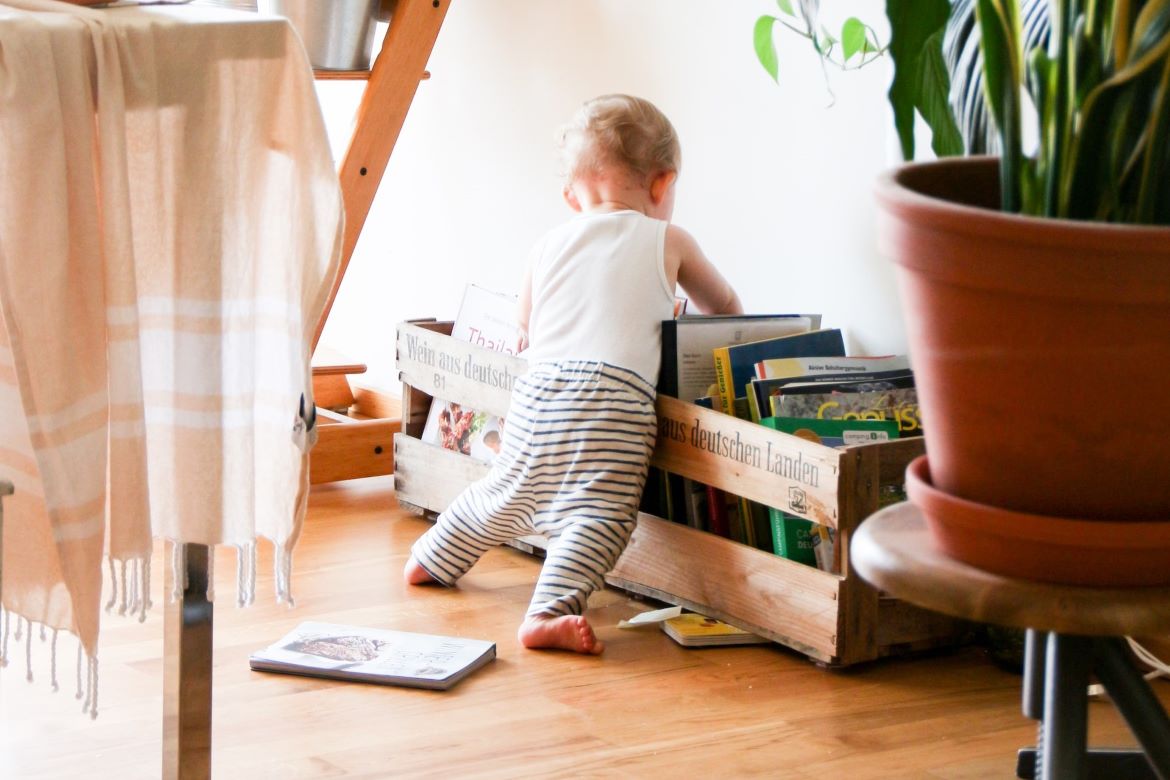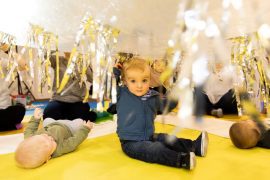By Jane Marsh
You’re enjoying playtime with your little one. Their small hand reaches for the coffee table and they slowly pull themself up. Your first feeling is excitement – they’ve just made the first move towards walking. Then you look around the room in horror as you see all the possible hazards for a more mobile child.
So, how do you create a balance between a space meant for fun exploration while also providing essential protection? The biggest hurdle is safety, which is slightly more involved. This checklist can help you knock out the most significant problem areas in a weekend. Then you get to do the fun part of encouraging your baby to interact with their world on this new level and take their first steps.
1. Get Down to Their Level
The first thing you should do is get down on their level. Sitting with your kid on the floor is a great start. What do you see? Check for any objects that may be a choking hazard for them. As you move through the rest of the steps, always think about things from their viewpoint – it’s possible to miss something from your bird’s eye view.
Chemicals like cleaning products tend to come in brightly coloured packaging, which makes them enticing to little adventurers.
2. Move Chemicals Out of Reach
Chemicals like cleaning products tend to come in brightly coloured packaging, which makes them enticing to little adventurers. If you haven’t yet, move all of these up to a high shelf or cabinet out of reach.
3. Switch to Natural Cleaners
While you’re at it, research your cleaners and see if there are more natural swaps you can make. For example, vinegar solutions are incredibly effective. Your child will be putting their mouth and hands where they haven’t been before and the likelihood of ingesting cleaner secondhand is relatively high, so ensure it’s non-toxic.
4. Check Your Babyproofing
When you were pregnant and doing your first round of babyproofing, you were still new and may have forgotten a few things. Now that your baby is turning into a full-blown toddler, it’s time to revisit those changes and make some improvements.
You’ve already covered moving chemicals to higher shelves, but you should also install baby gates to prevent kids from entering rooms they shouldn’t or falling down the stairs. Also, protect your baby from electrocution by covering outlets.
Now that your baby is turning into a full-blown toddler, it’s time to revisit those changes and make some improvements.
If you’ve already completed these things, check around to make sure all the covers are still in place and the baby gate is functioning correctly before moving on.
5. Double Down on Toddler Proofing
Since your little one is pulling up on things and getting ready to walk, there are a few toddler-proofing measures you should take. The first is to switch to cordless blinds to avoid dangerous entanglement.
Next, prevent crush accidents by anchoring things like bookshelves and dressers to the wall. Furniture with shelves or knobs is handy for kids to pull up on and explore, but they’re also the pieces most likely to tip over onto your child.
Finally, round out sharp corners at your toddler’s level by adding soft guards. You can get these in a few different materials and styles. They’re incredibly handy for preventing bumps and worse from clumsy tumbles.











